Four Towns in Baoshan Were Selected as the Hometown of Shanghai Folk Culture and Art
What does the hometown of Shanghai folk culture and art mean? It refers to special areas where the distinctive folk culture and art are loved and widely participated by the masses and have a great influence in Shanghai. Currently, 40 areas across Shanghai have been selected as 2021-2023 Hometown of Shanghai Folk Culture and Art.
Four towns in Baoshan District are also included in the list. Let’s learn about the towns.
Luodian Town (Luodian Dragon Boat)
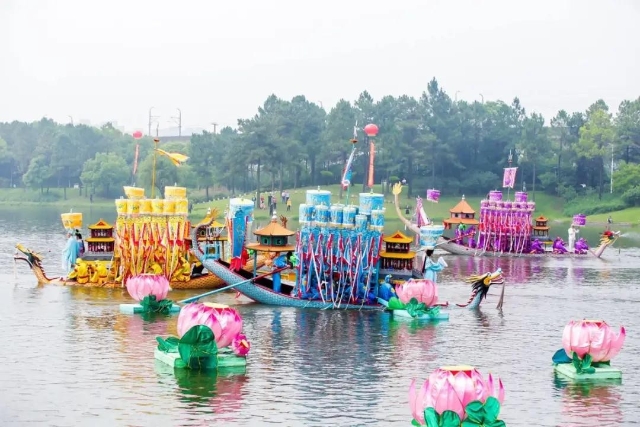
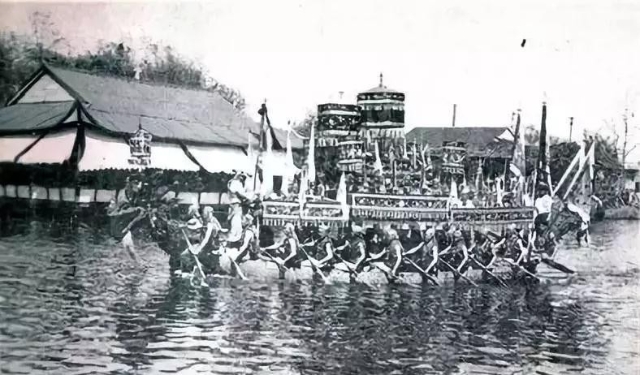
A dragon boat in 1936 (a copy from the book Shanghai Historic Postcard, published by Tongji University Press in October 1993)
Ten thousand of people were watching the dragon boat sailing. Baoshanhas a long history of boats and has a special emotion for boats. Luodian dragon boats have a history of 400 years and have been inherited until now. Luodian Dragon Boat Festival has been held in Baoshan for 15 times, making this famous traditional folk culture glow with new brilliance. In 2008, Luodian dragon boat was included in the second batch of National Intangible Cultural Heritage List.
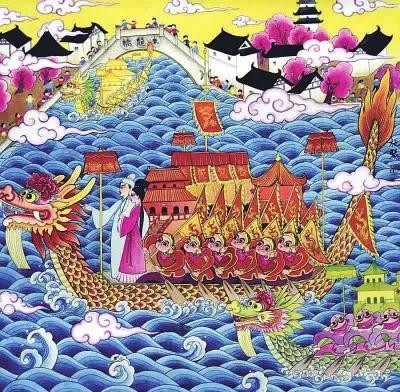
Folk painting themed with dragon boating created by people in Luodian Town
In Luodian Town, there is a special procedure for dragon boating. For example, peoplewillput up a bamboo pole in the center of the town, delivering the message that the dragon boating performance will begin soon. In the spectacular performance, the helmsman steps on the boat boardwith his feet and direct the rowers. The on-board music group plays special songs that match the boating performance. At the same time, performances on the land are also rich and have a dozen types. The most exciting part of the dragon boating performance is the “trick”. Different combinations of trick can form a variety of formations and rowing routes, turning into different shapes of chains, lotus hoops, crossed loops, and circles.
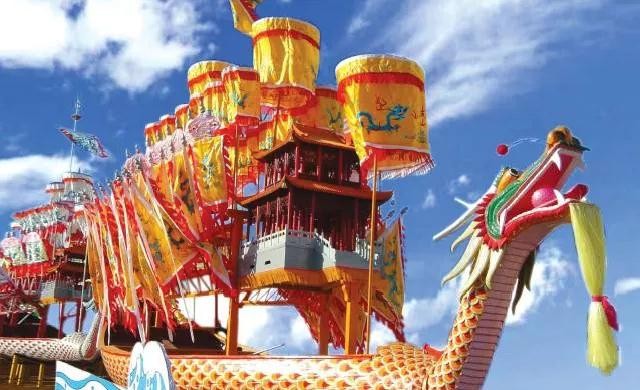
The dragon boats also have particular decorations. The dragon head is carved with the camphor wood. The dragon has a pearl in the mouth that opens and raises its tail. The frontpart of the boat is a Pailou (memorial archway gate) in the style of the ancient building Beiji Ge of Ming Dynasty. The rear part of the boat is a pavilion with carved beams, painted tiles and cornices which are quite beautiful.
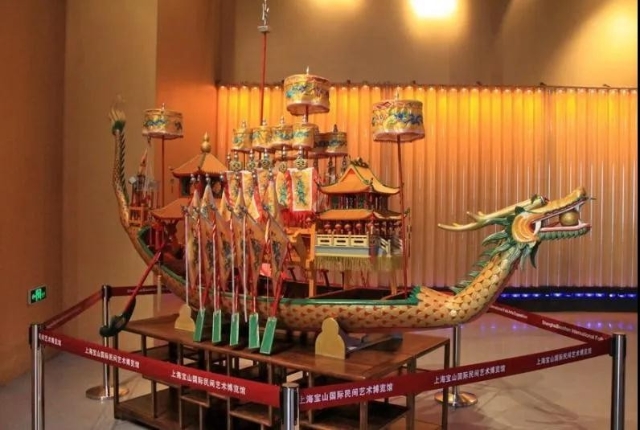
Luodian dragon boat model, displayed in Shanghai Baoshan International Folk Art Expo
Gucun Town (Folk Poetry)
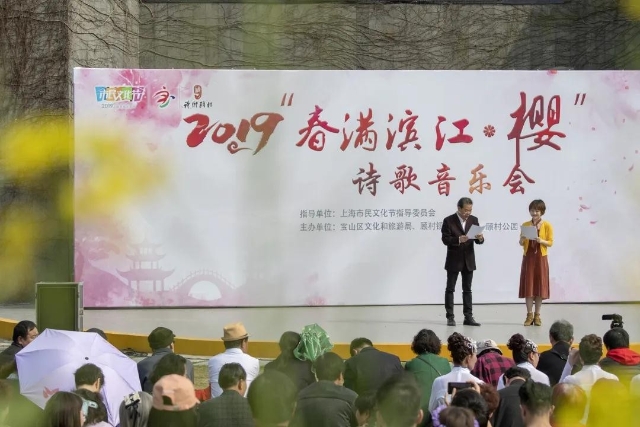
Gucun Town in Baoshan District is famous for the cherry blossoms in Gucun Park and known as the “hometown of poetry”. The small town has been related to the poetry since more than 700 years ago. In Yuan Dynasty, there were 45 poems about Gucun Town. Starting from 2008 when Gucun was named as the “Hometown of Chinese Folk Culture and Art” by the Ministry of Culture and Tourism, the town holds the Poetry Hometown Conference every two years and has ever launched activities for many times including Shanghai “Gucun Cup” Folk Poetry Competition, Long March of Chinese Poetry in Gucun, Yangtze River Delta Poetry Forum, Folk Poetry and Culture Festival, and Folk Poetry Forum. Nearly ten poets of Gucun Town have published poemcollections and joined the Shanghai Writers’ Association. In recent years, Gucun Town has introduced poems in villages and schools to bring them to different scenarios of people’s daily life.
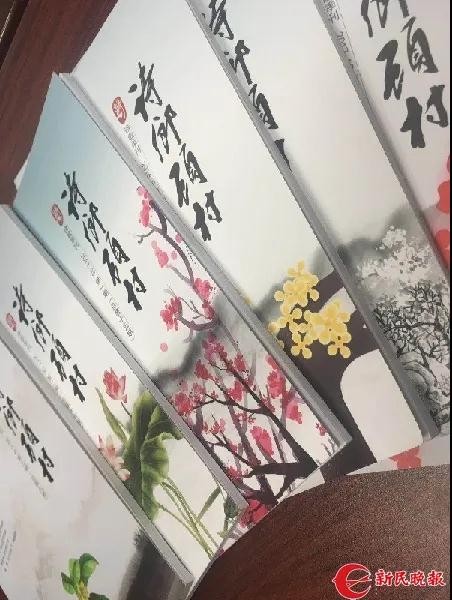
Poetry journal of the poetry hometown Gucun
At present, poetry activities are emerging everywhere in Gucun Town. Residents are gathered by poetry and various cultural activities and feel a sense of belonging of their home when participating in group events. In the town, there are not only rural relocated families and the elderly who were ever educated youth returning to the city but also new comers from Shanghai City. Cultural shock and integration provide suitable soil for the growth of poetry. No matter where you are from, people’s feelings for the poetry which can be considered as a home never differ. As the intangible cultural heritage of Baoshan, folk songs and ballads have been inherited and carried forward in the poetry activities held in Gucun Town.
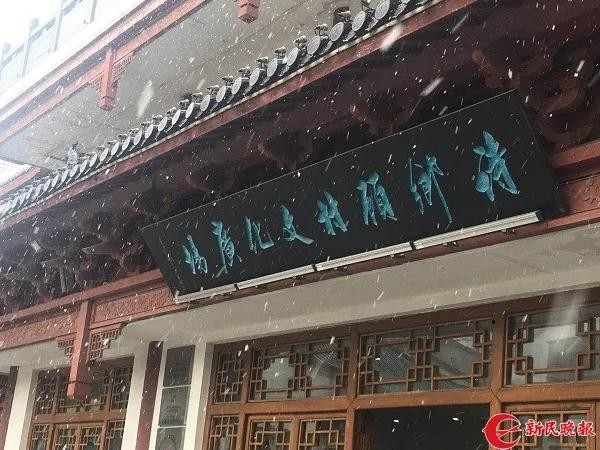
Yanghang Town (Blown Paper Prints)
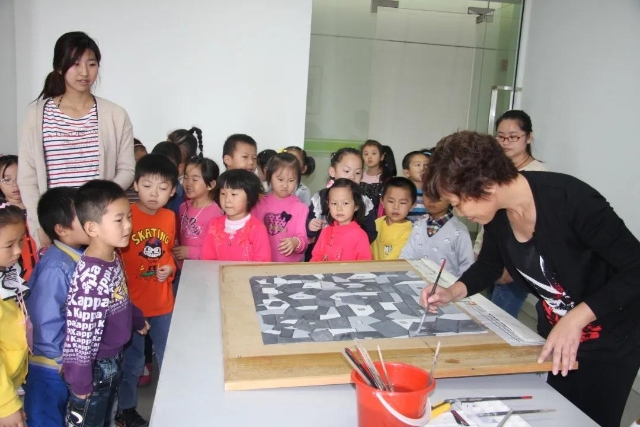
The blown paper print of Yanghang Town is one of the “three little flowers”of Shanghai folk art. The project has become a featured cultural brand of Yanghang Town in Baoshan District and a large number of works have obtained awards at home and abroad since 1988. The town was named as the “Hometown of Chinese Folk Art” in 2006 and the blown paper print was included in the Shanghai Intangible Cultural Heritage List in 2007.
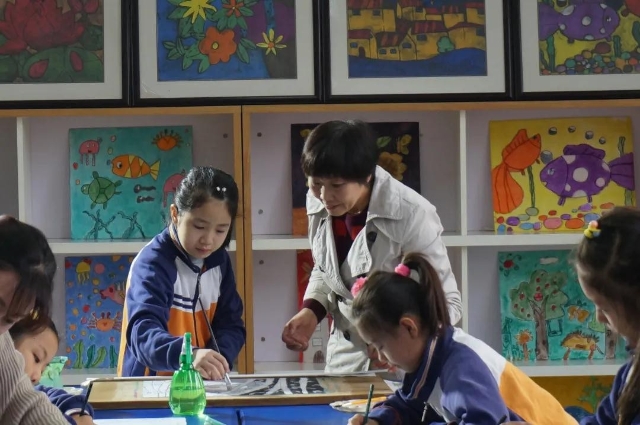
The blown paper print has been included in the fine arts textbooks of Grade One of junior high schools in the national nine-year compulsory education system and recognized as “suburban treasures” of Shanghai. In communities, schools, villages, and armies, numerous residents ranging from children to people at their seventies or eighties begin to create blown paper prints.
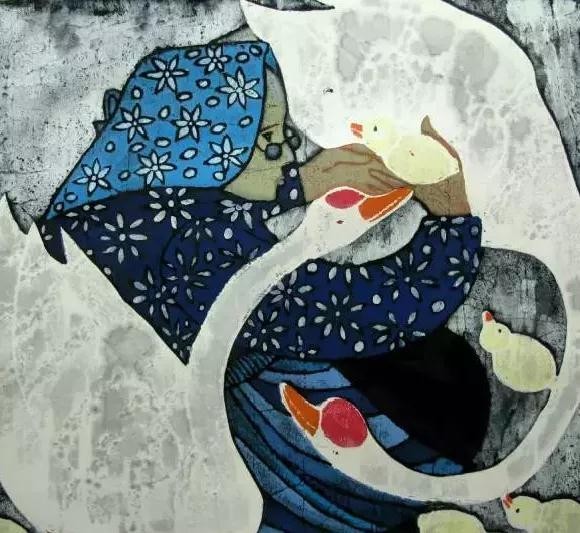
Luojing Town (Luojing Cross-stitch)
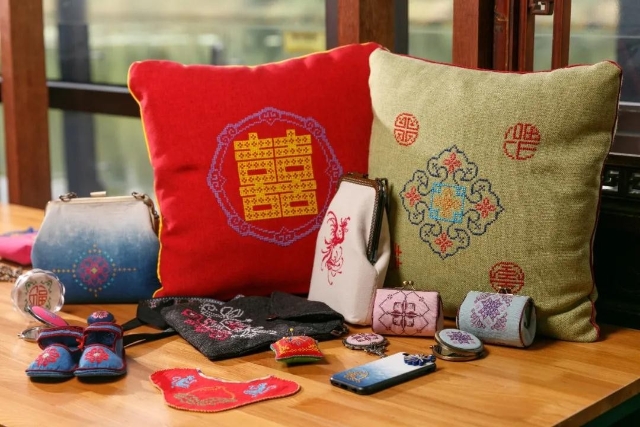
Luojing cross-stitch has the characteristics of original farming culture and unique beauty of the south area of Yangtze River. It was included in the Shanghai Intangible Cultural Heritage List in 2007. Over the years, Luojing Town has taken multiple measures for the inheritance and perseverance of cross-stitch. The cross stitch is widely participated by local people and has gone abroad for cultural exchanges many times.
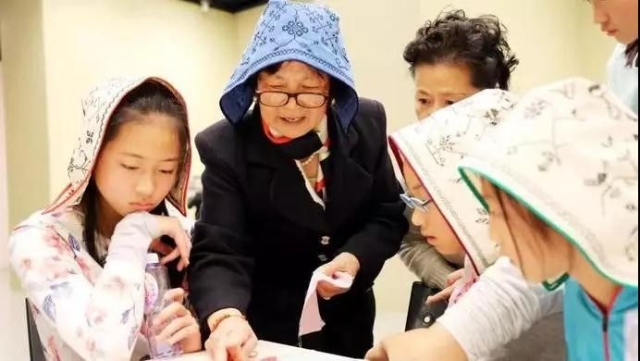
Cross-stitch turban is called "Chinese-style Jane Eyre hat" by foreigners.
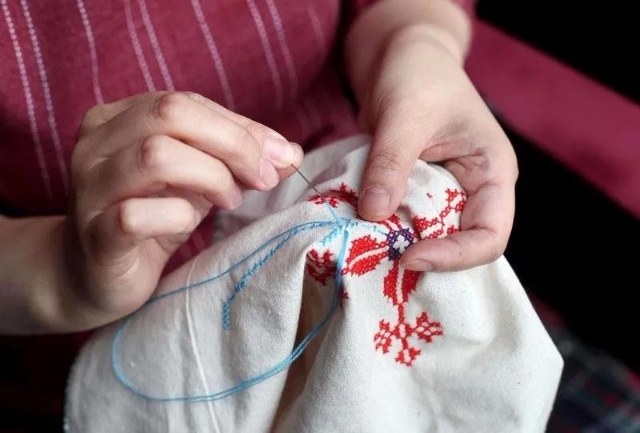
The Luojing cross-stitch is a traditional craftsmanship in Baoshan. The cross-stitch on the clothes or kerchiefs made of homespun cloth has been used as the ornamentation of turbans, bellybands, and shoe upper for at least 300 years.
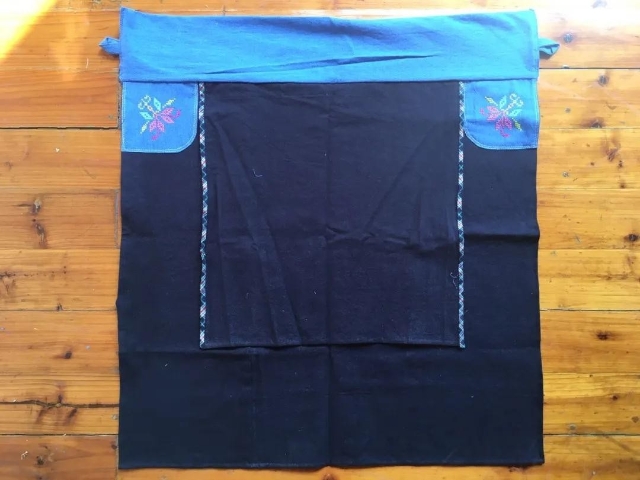
In the past, cross-stitch is commonly seen in daily necessities. In the daily labor work, women used to wear headscarves to protect from sunshine in the summer, keep warm in the winter. The headscarves can also prevent them from the dust when they are doing farm works in the fields. The headscarves are basically made in the original color of the cotton threads and designed with ornamentation for beauty. Local people are good at designing ornamentations. They initially designed the ornamentation fitting the grain lines of the clothes and gradually changed it into the cross-stitch ornamentation, inheriting the technique to the present.
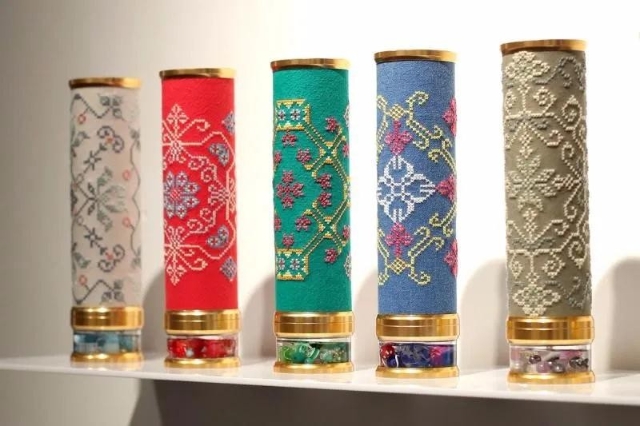
Luojing cross-stitch kaleidoscope, an exhibit of the Contemporary Design Exhibition of Intangible Heritage themedwith “Flower Blooming”
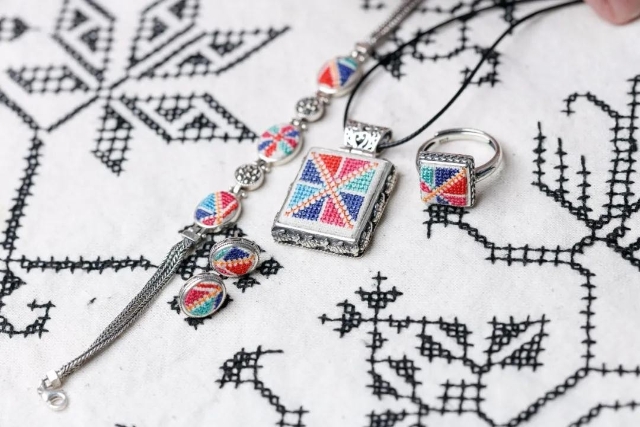
A series of derivative cultural and creative products of cross-stitch have been developed, such as keychains, car pendants, coasters, pillows, handbags, jewelry, and decorative paintings. These works have won creative awards and displayed at the domestic and international cultural exchange platforms. Luojing cross-stitch does not only carry forward the traditional aesthetic value but also reflect the innovative and fashionable modern life concept in various ways.

宝山汇APP

上海宝山微信

上海宝山微博